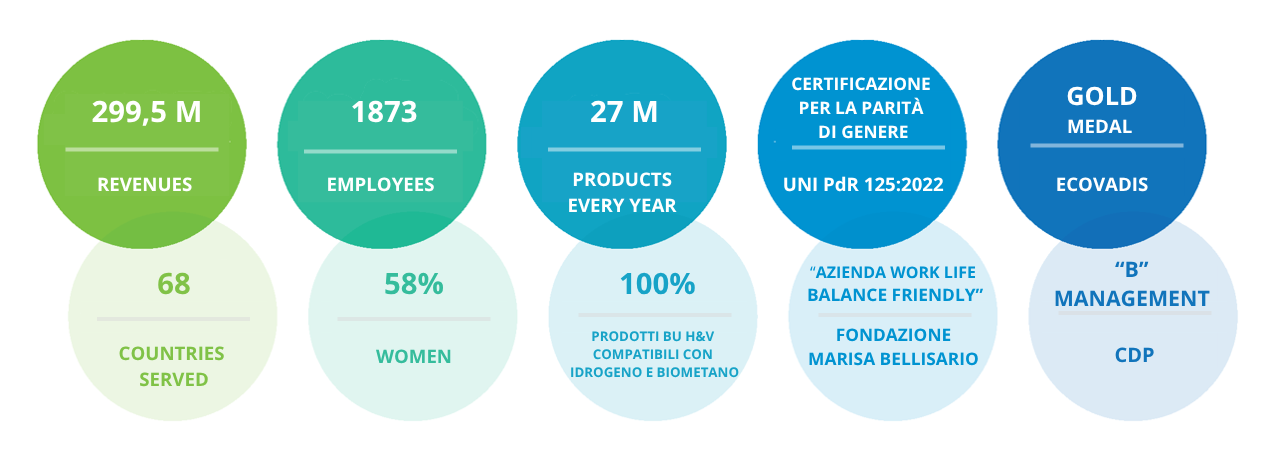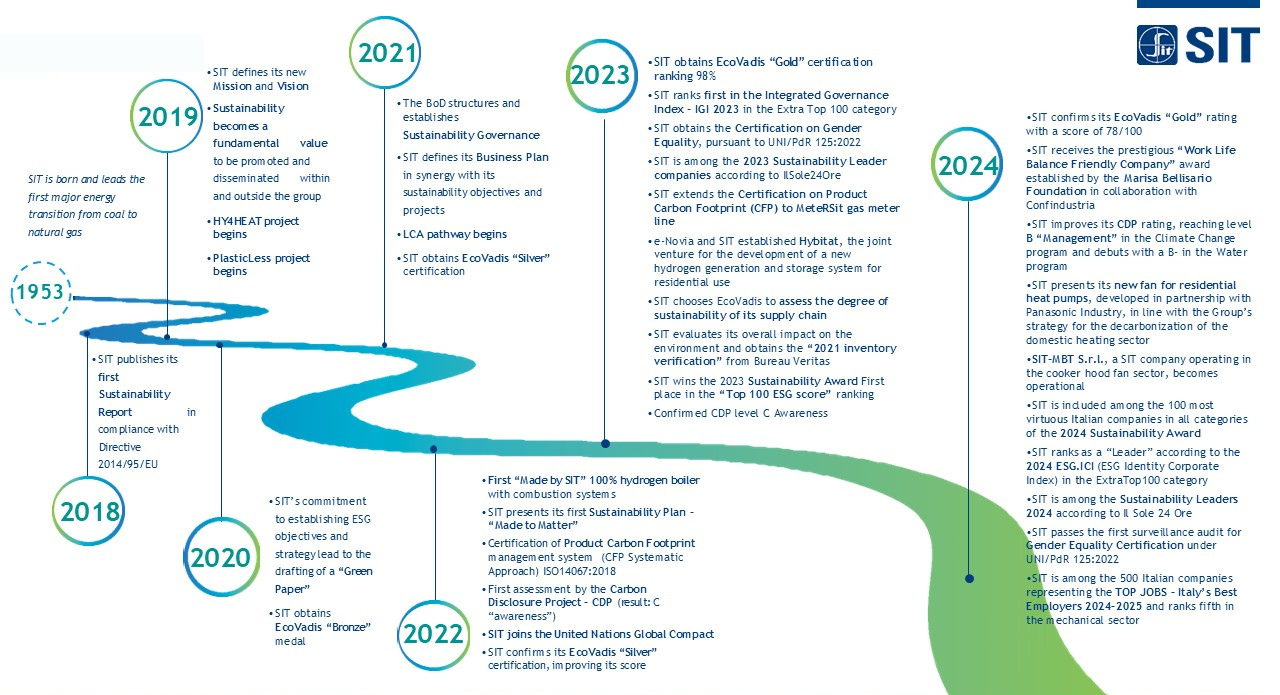
Sustainability for SIT
SIT is a leader in the creation of smart solutions for the control of environmental conditions and consumption measurement for a more sustainable world and operates, globally, in key technology sectors that enable energy transition. ESG factors are inextricably linked to SIT’s business model, which aims at “sustainable success”: a full convergence between strategic goals and environmental, social and governance commitment.

SIT is aware of the growing importance of sustainability topics around the world and made a commitment in 2018 to monitor the environmental, social and economic impacts of its business activities, with a view to continuous improvement.
Each company in the group pursues the goal of creating value for all stakeholders by combining economic performance with the production of quality products and attention to social and environmental sustainability. At the same time, it promotes ethics and integrity and ensures attention to human resources and to local communities.
Given that the achievement of the Company’s strategic business objectives is inherently linked to its environmental, social, and governance commitments, SIT has begun a comprehensive sustainability journey in recent years.

Through its Sustainability Report, the SIT group aims to transparently engage all stakeholders, communicating both its commitment to society and the local area, as well as its focus on human resources and the environmental impacts generated by its activities.
Starting from 2024, SIT is subject to the Corporate Sustainability Reporting Directive (CSRD), a regulation that has significantly transformed the way many companies report on sustainability. The objective of the CSRD is to improve the quality, comparability, and transparency of information, thereby contributing to the transition toward a sustainable economy. In this context, the CSRD introduces new elements, including the adoption of the new European Sustainability Reporting Standards (ESRS) and the integration of the Sustainability Report into the Management Report, making it an integral part of the annual financial statements and subjecting it to the same principles of transparency, traceability, and control.
Continuing with previous years, the data included in the Report must be verified by an independent third-party body, which certifies its accuracy, quality, and reliability, thereby ensuring the transparency and credibility of the reported information.
In drafting the Sustainability Report, the SIT group considers not only its own activities but also the interests and expectations of stakeholders. In particular, the company conducts a double materiality assessment to identify the most relevant sustainability issues both in terms of their impact on the environment and society, and in terms of economic and financial implications stemming from ESG-related risks and opportunities. This analysis reflects the priorities of management, employees, and all categories of stakeholders with whom the Group interacts in the course of its activities.
Through this process, the most significant topics are identified—those that are essential for fully understanding the company’s performance and its economic, social, and environmental impacts.